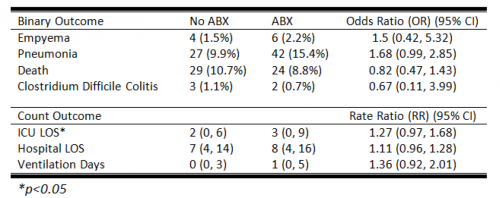With the introduction of damage control laparotomy (DCL) in the early 1990s, the trauma literature has focused on the nuances of this procedure. A significant amout of research has looked at patient selection, techniques, optimum time to closure, and complications afterwards. Studies on the single-look trauma laparotomy (STL) seem to have fallen behind. When compared to DCL, it seems to have relatively few complications.
But is that really so? A paper from the 1980s showed a nearly 50% complication rate after STL, but this included some trivial things like atelectasis which padded the numbers. A group at Scripps Mercy in San Diego looked at long-term complications after STL in a state-wide California database. They were able to identify patients who underwent STL who were then readmitted for complications at a later date. They studied this data over an 8-year period.
Here are the factoids:
- A total of 2,113 patients had a STL during the study period
- One third (712) were readmitted at least once, with a median time to first readmission of 110 days
- 30% of these patients had a surgery-related complication:
- bowel obstruction 18%
- infection 9%
- incisional hernia 7%
- Mechanism of injury was not related to development of complications
Bottom line: More than 10% of patients undergoing single-look trauma laparotomy develop significant complications. This is much higher than the complication rate seen after typical general surgical procedures. The difference between these groups and the reasons are not clear. Additional work must be done to tease out the risk factors, and our patients should be counseled on these potential complications and when to return for evaluation. Finally, the trauma surgeon should always use their best judgment to avoid an unnecessary trauma laparotomy.
Reference: Long-term outcomes after single-look trauma laparotomy: a large population-based study. Session IV Paper 14, AAST 2018.


